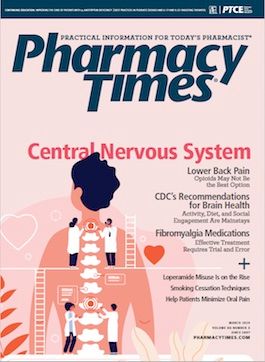Publication
Article
Pharmacy Times
The Expanding Treatment Landscape of Relapsed or Refractory B-Cell Non-Hodgkin Lymphoma
A highlighted session from the ASHP 54th Midyear Clinical Meeting, held December 8-12, 2019, in Las Vegas, Nevada.
In December 2019, Stephen Harnicar, PharmD, BCOP, and Jessica Auten, PharmD, BCPS, BCOP, presented a comprehensive overview of relapsed and refractory B-cell non-Hodgkin lymphoma (NHL) at an American Society of Health-System Pharmacists satellite symposium. This topic is in the spotlight because treatment options have expanded and improved for follicular and mantle cell lymphomas.
Dr. Harnicar started the session with an overview of the second most common type of NHL, follicular lymphoma (FL). This slow growing cancer (median overall survival is 20 years) increases in incidence with age, affecting men and women equally. Roughly 20% of patients need treatment within 3 years of diagnosis. He discussed prognostic tools used to predict which patients were likely to have early disease progression and poor long-term outcomes.
FL can be insidious and relentless; patients can experience multiple relapses requiring treatment. With each relapse, the duration of response tends to shorten. For patients with early relapses (progression fewer than 2 years after diagnosis), the standard therapy is not well defined and may include stem cell transplant; phosphatidylinositol 3-kinase (PI3K) inhibitors duvelisib, copanlisib, or idelalisib; or lenalidomide plus rituximab. Patients with late relapses or multiple relapses may receive chemoimmunotherapy with rituximab maintenance, bendamustine and obinutuzumab with obinutuzumab maintenance, PI3K inhibitors, or lenalidomide with rituximab.
Next, Dr. Harnicar covered the rare, aggressive mantle cell lymphoma. Risk increases with age, white race, and male sex. One of the most important prognostic markers is the presence of TP53 mutations and overexpression. Second-line therapy options are dependent on short versus extended response to firstline therapy. Multiple options exist and oral therapies, including Bruton’s tyrosine kinase (BTK) inhibitors (eg, acalabrutinib, ibrutinib, or zanubrutinib), venetoclax, or lenalidomide often in combination with anti-CD20 monoclonal antibodies are commonly chosen.
Dr. Auten followed with information on pharmacists’ roles now that these NHLs can be treated with small molecule inhibitors and various combinations of oral and infusion agents. She focused on management of patients receiving BTK, PI3K, and BCL2 inhibitors.
A primary concern with ibrutinib is the number of potential concomitant medications metabolized by CYP3A and drug interactions. Clinicians must be cognizant of steps to take to minimize downstream effects of interactions. Ibrutinib can cause bleeding, as can acalabrutinib, so it is critical to ensure that patients stop taking supplements associated with bleeding, discontinue aspirin, and use a direct oral anticoagulant rather than warfarin if anticoagulation is needed. Monitoring for cardiac adverse effects (eg, arrhythmias, hypertension) is an ongoing need and is seen with a higher incidence in patients receiving ibrutinib.
Class toxicities associated with the PI3K inhibitors include immune-related effects (eg, hepatotoxicity, diarrhea/colitis that may require systemic steroids, and pneumonitis), hypertension, hyperglycemia, dermatologic manifestations, hepatotoxicity, and infection. Dr. Auten discussed when to interrupt therapy with the PI3K inhibitors due to adverse effects.
Venetoclax is a drug that must be titrated upward at initiation due to risk of tumor lysis syndrome and patients must be carefully monitored based on risk. Venetoclax has also been associated with myelosuppression, and administering a granulocyte colony-stimulating factor and holding or reducing the dose is prudent.
Dr. Auten reiterated steps that pharmacists need to take to ensure patient safety, while emphasizing infection prophylaxis. She concluded by sharing evidence to support that clinical and specialty pharmacists are uniquely positioned to improve communication, patient activation, and shared decision making with this patient population and their health care providers.







